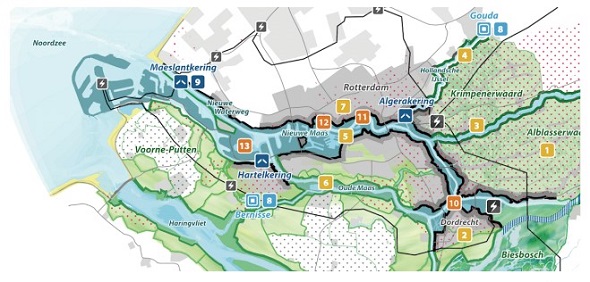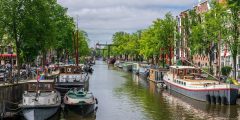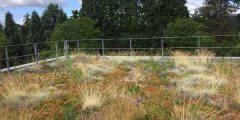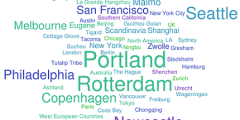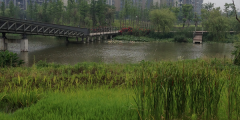Merging Blue-Green infrastructure with urban design
October 13, 2020
Urban design with Blue-Green infrastructure plays a key role in addressing climate related water challenges such as water pollution, water scarcity, floods, land subsidence, stormwater management, ecosystem services and public health. Nanco Dolman (Royal HaskoningDHV) discusses this in greater detail. Integrated water management Integration of water management in the different phases of design and development …
No Money, No Problems: Volunteering to Maintain Blue-Green Infrastructure (BGI)
June 22, 2020
When we think about public infrastructure, such as roads, parks, or even sewers, we often think of large, connected systems that are easy to spot and hard to ignore. But what about the more hidden types of infrastructure that are decentralised and small but collectively serve a big purpose? Blue-green infrastructure (BGI), such as green …
Is the Sponge City Program (SCP) transforming Chinese Cities?
March 16, 2020
“We live in an isolated age.” An age where people are separated from nature and cities are disconnected from green fields. Today, Chinese cities are facing rapid urbanisation, leading to fast growing urban populations. For example, the population in Shanghai currently exceeds 24 million, in Guangzhou there are over 15 million, Beijing over 12 million, …
Resilient Cities at the Amsterdam International Water Week Conference 2019
December 17, 2019
In early November the Amsterdam International Water Week (AIWW) brought together leaders from government, the private sector and academia to explore a new era of sustainable water management. AIWW is a global movement committed to a future in which a circular and sustainable water environment is achieved. One of the core topic areas this year …
Ecoroofs in Portland, Oregon, USA
November 19, 2019
Authors: Noelwah R. Netusil and Ben Thomas, Reed College (Portland, Oregon). Portland, Oregon, USA was identified as an international leader in the Blue-Green Futures questionnaire that explored the perceived benefits, beneficiaries, multifunctionality and challenges of planning and delivering Blue-Green infrastructure (see our earlier blog). Portland has relied heavily on green infrastructure (GI) projects, such as …
Assessing subconscious (implicit) perceptions of Blue-Green infrastructure
July 2, 2019
Behaviour has been shown to be predicted by a combination of implicit (subconscious) and explicit (conscious) attitudes and perceptions. Explicit perceptions can be captured through techniques such as questionnaires, interviews, and stated preference tests, that ask respondents to report their attitudes and beliefs. But how can we measure our implicit perceptions, those that are rooted …
Who are the international leaders in Blue-Green infrastructure?
May 30, 2019
As the multiple co-benefits of Blue-Green infrastructure become more widely recognised and acknowledged, more and more cities are incorporating these approaches into their strategies to tackle environmental and social challenges. Emily O’Donnell explores further in this blog. Multiple co-benefits of Blue-Green infrastructure As an example, the Ningbo (China) Eco-Corridor project (led by the Ningbo Planning …
Developing new Blue-Green futures: multifunctional infrastructure to address water challenges
April 10, 2019
An exciting new international research project led by the University of Nottingham will focus on developing new Blue-Green futures for cities, where multifunctional infrastructure is used to address water challenges. This research is funded by the British Academy’s Tackling the UK’s International Challenges programme (January 2019 to July 2020). Emily O’Donnell gives a short introduction …

